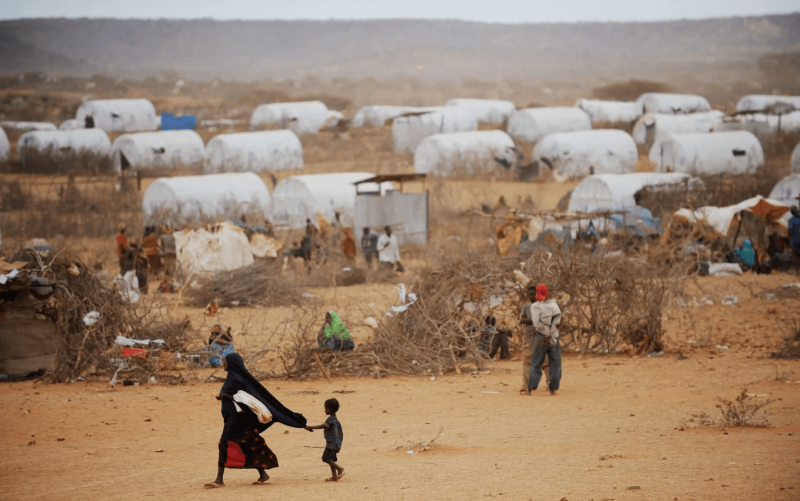On June 9th 2022, persistent rainfall swept through Lagos, Nigeria’s most populous and smallest state. The downpour led to loss of lives, destruction of property and deterioration of an already dilapidated infrastructure.
In the past decade, natural disasters such as flooding and drought, mostly driven by adverse climate change effects, have increased across the continent. For instance, the current drought crisis in East Africa has withered crops and left lands unproductive for millions of farmers who depend on them for sustenance and consumers who rely on them for food. This leaves more than 10 million people highly vulnerable to starvation and exacerbates malnutrition.
Unfortunately, there has been a low rate of adoption of modern day agricultural technologies by African farmers, a key way to address poor crop output. The continent remains the last frontier to adopt these techniques that have increased crop yields without increasing per acre usage of agro-chemicals in the US, Canada , Brazil, India, Argentina, Australia and other countries. What’s slowing the embrace?
The tepid reception is linked to crop biotechnology rejectionist campaigns, fronted by local activists but financed and guided by environmental groups in western countries. Moreover, there has been an inadequate investment of resources, both academic and commercial, into research targeting crops mostly consumed by a wide section of Africans. These crops, christened “orphan crops” hold a lot of promise as they could be consumed even by a global audience, as they have naturally evolved a resistance to the deleterious effects of local climate change. Some of these orphan crops could substitute for imported conventional crops whose prices have shot up due to the Russian-Ukraine war. Before the war, the two warring countries produced about 28% of globally traded wheat, 29% of barley, 15% of corn and 75% of sunflower oil.
Africa’s dual problems: climate change and a population explosion
Across the world, climate change is reverberating. The average global temperature has risen by more than 0.9 degrees Celsius over the past century. That may seem like a small increase, but it’s much larger in many African countries. The impacts have been catastrophic in some cases. Human displacement as a result of climate change has exceeded that due to conflicts.
With climate-change-related problems come extreme weather conditions. This translates to shifts in weather conditions and extremes. Yesterday’s rare extremes are now commonplace and while tomorrow’s occurrences are even more extreme.

A fast-growing population exacerbates the crisis. According to recent projections from the United Nations, by the end of 2022, the world’s population will climb to eight billion people and outstrip 10 billion inhabitants by the end of the century. The most significant growth originates from sub-Saharan Africa and parts of South Asia. And while fertility rates are dropping in many countries — in prosperous South Korea it is below 1% in Africa it is 4.2% ( 2.1 is needed to replace people who die) in desperately poor Niger Republic, the fertility rate is almost 7%.
African mothers will bear about half a billion children this decade. By 2050, a quarter of the world will be African. Such an astronomical increase begets a soaring demand for food, clothing, infrastructure, medicines, schools, hospitals and other infrastructure necessities. In the Horn of Africa, home to almost 150 million people, the exigency for food has skyrocketed over the last decade mainly due to conflicts, climate-change-induced crises, soaring demand for land, low adoption of modern-day agricultural practices and a host of other issues. This demand for land has affected protected areas for wildlife and aquaculture. (Britain’s Prince William was widely criticized when he raised concerns how Africa’s population growth is encroaching on ranches and wildlife parks.)
Feeding Africans
As the population of Africa, especially in urban areas, balloons, so does the demand for nutritious food. Across the world, almost a billion people go to bed hungry, and a quarter of those reside in Africa. The continent faces innumerable nutritional challenges. In 2016, the number of malnourished persons in Africa swelled from 101 million to 181 million persons. Meanwhile in 2020, the number of famished people resident in the continent climbed to 282 million from 236 million people. The reality is that Africans are hungry, and need nutritious food.
Regrettably, crop yields in Africa have not increased in step with birth rates. This has led to poor food harvests and an low farm revenues generated from the sale of these crops. Also, conflicts between farmers and cattle herders have exacerbated the lingering crises of poor harvests, especially across West and Central Africa. For instance, in the prairie region of Nigeria, deadly clashes have resulted in farmers being displaced and farmlands razed leading to a decline in agribusiness investments by investors.
To meet these challenges, governments across the continent must invest significant financial and human resources. Although, Africa emits the lowest amount of greenhouse gases, it is likely to be hit the hardest because of the myriad food and health challenges, and the exploding population numbers.
Uchechi Moses is a graduate student of the Department of Biotechnology, Osaka University, Osaka, Japan. Find Uchechi on Twitter @UchechiMoses_































